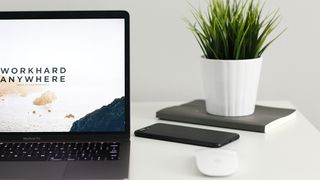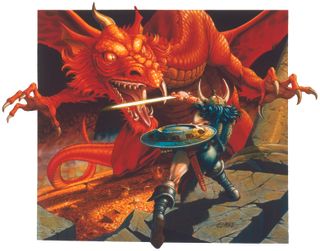8 survival secrets for freelance creatives
Workflow techniques to boost creativity and help you stay sane.
Mastering creative process is one of the hardest things to do, especially as a freelancer. Juggling all the admin things you need to stay on top of, all while keeping your creativity and inspiration flowing, can quickly start to feel overwhelming. There is a plethora of literature on design processes, but it's not a one-size-fits-all situation, and it takes many designers years of trial and error to find a workflow that suits them.
However, while you're finding your process, there are some handy hacks you can use to help keep things running smoothly and (hopefully) prevent you from feeling overwhelmed. Here are eight lesser-known workflow tips designed to help you stay sane as a freelance designer.
While you're rethinking your workflow, you might also want to check out our pick of the best productivity tools or the books every graphic designer should read.
01. Understand you don’t always need to be productive
We're starting with this one because it’s massively important – especially if you're a freelancer. Overworking yourself is a great way to stifle creativity. It’s okay to take the time you need to create great design or art, and it’s okay to not be productive all the time. Just make sure you get the work done when it counts.
Try not to add too many things to your to-do lists. Instead, create smaller lists for each day, and break things down into achievable goals. This way, you can feel good about checking things off, and as much as possible, avoid having to roll over tasks to another day.
02. Recharge with meditation breaks

In order to nurture your creativity you need to ensure your mind is a free space. Aim to make your head as clear as your desk is (unless your desk is a mess, in which case ignore this). Guided meditation or mindfulness apps like Headspace can be a great way to help you learn how to clear your mind. Of course, they're not an instant hit for everyone, and how helpful you'll find them depends a bit on how open you are to the concept already.
A little bit of patience and perseverance can go a long way. Reducing stress and working on your general wellbeing will have hugely positive results for your creativity.
Get the Creative Bloq Newsletter
Daily design news, reviews, how-tos and more, as picked by the editors.
03. Let your subconscious do some legwork
Starting work ahead of schedule and working iteratively allows you to use the gifts of hindsight and reflection while you still have time to make changes. Here’s an example workflow scenario: Work on your project until you get to a point in the day where you feel like you've run out of creative juice. At this point (if it's not the end of the work day), switch to admin or other, less creatively-demanding tasks. Then come back to your creative project the next day, with fresh eyes after a good sleep.
You might be surprised how many creative problems look different after a break. Often, your subconscious will save the day by popping up with a solution when you least expect it (if this happens, write it down or send yourself an email with the details if you're likely to forget your bright idea).
To adopt this approach, you need to build extra time into your workflow. It won't always be possible if you're working to tight deadlines. Even if you don't have time to stop completely for the day, try to make the most of these techniques by splitting your work into chunks and reflecting on progress along the way.
04. Find a mentor
It’s easy to forget this one when you’re in the middle of a project or creative problem, but it’s always helpful to get feedback from your co-workers, peers, friends, family and so on (the more varied the group you can draw from the better). It can really help to seek out a mentor or mentors – these can make a big difference in your personal and professional development.
This is true no matter what point you're at in your career – some of the most successful people still have industry mentors, which just goes to show how valuable this process can be. Similarly, if you find yourself mentoring someone else, you might be surprised at how much you can learn from them, in return.
There are some great communities out there for designers and creatives where you can seek feedback and/or find a mentor. Facebook group such as Designer’s Guild and Designer’s Lounge bring together of designers from all walks of life, including alumni from the top universities and organisations around the world.
05. Maximise your creative intake

It makes sense to say that for maximum creative output we should also maximise creative input – what we're going to call 'creative intake'. Make time for the things that make you happy. Read more. Surround yourself with positive influences. Go for walks in places you’ve never been. Listen to music*. The sum of these influences will enable you to be a prolific creative.
*When listening to music whilst working go for something with a slower tempo: research has shown that listening to music below 120bpm is good for concentration, rather than distracting you from the task at hand. Try classical, lo-fi hip hop instrumentals or electronic music. (In a noisy spot? Try some noise-cancelling headphones.)
06. Get moving
Exercise has many obvious and well-documented benefits for the mind and body, but it’s not always something that springs to mind when struggling with a creative problem. Exercise is a great way to clear out the cobwebs from your creative brain. If you're feeling creatively frustrated, doing something as simple as 20 star jumps or push-ups can help reset your system and get the blood pumping around your body.
07. Don’t check emails first thing
There's nothing that can't wait until you’ve completed your morning routine. Disrupt your waking-up period, and you're in danger of sabotaging your entire day before it even starts (think: urgent changes to work, overdue invoices, etc). After a shower and food (at a minimum) you will be more prepared to handle any surprises, rather than get weighed down by them.
Pro version: don’t look at your phone or laptop at all until you've completed your routine.
Also see this infographic on the productivity mistakes you're making in the first 10 minutes of your day.
08. Declutter your workspace

It’s very easy to overlook the impact your immediate surroundings can have on your mindset and creative process. Keep your desk area clean and organised (don’t be afraid to use Post-it notes and other analogue ways of scribbling down ideas if you find this help you, for example). Try to maximise natural light, get a small plant (a real one!) or decorate your space in a way that is personal to you.
This extends to your digital workspace too. Try and organise your computer desktop and emails in a way that means it’s not a chore trying to work around either of these things.
If you work from home, ensure as much as possible that your work space is separate from your living space, so you aren’t drawn into any distractions. It’s worth trying co-working spaces, creative studios and cafés as these help maintain the distinction between work and personal time. They're also good places to network.
Read more:

Thank you for reading 5 articles this month* Join now for unlimited access
Enjoy your first month for just £1 / $1 / €1
*Read 5 free articles per month without a subscription

Join now for unlimited access
Try first month for just £1 / $1 / €1
Jacob is a senior UX designer who has worked with startups as well as household names. He studied for his Masters in Design at Northumbria University in the UK and writes on the topics of design and entrepreneurship.
Related articles
-

-

-

-

